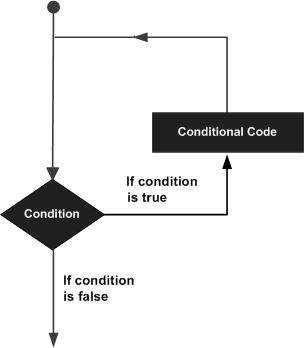There may be a situation when you need to execute a block of code
several number of times. In general statements are executed
sequentially: The first statement in a function is executed first,
followed by the second, and so on.
Programming languages provide various control structures that allow for more complicated execution paths.
A loop statement allows us to execute a statement or group of statements multiple times. Following is the general from of a loop statement in most of the programming languages −
 Swift programming language provides the following kinds of loop to
handle looping requirements. Click the following links to check their
detail.
Swift programming language provides the following kinds of loop to
handle looping requirements. Click the following links to check their
detail.
Swift supports the following control statements. Click the following links to check their detail.
Programming languages provide various control structures that allow for more complicated execution paths.
A loop statement allows us to execute a statement or group of statements multiple times. Following is the general from of a loop statement in most of the programming languages −
 Swift programming language provides the following kinds of loop to
handle looping requirements. Click the following links to check their
detail.
Swift programming language provides the following kinds of loop to
handle looping requirements. Click the following links to check their
detail.| S.No | Loop Type & Description |
|---|---|
| 1 | for-in This loop performs a set of statements for each item in a range, sequence, collection, or progression. |
| 2 | for loop Executes a sequence of statements multiple times and abbreviates the code that manages the loop variable. |
| 3 | while loop Repeats a statement or group of statements while a given condition is true. It tests the condition before executing the loop body. |
| 4 | do...while loop Like a while statement, except that it tests the condition at the end of the loop body. |
Loop Control Statements
Loop control statements change execution from its normal sequence. When execution leaves a scope, all automatic objects that were created in that scope are destroyed.Swift supports the following control statements. Click the following links to check their detail.
| S.No | Control Statement & Description |
|---|---|
| 1 | continue statement This statement tells a loop to stop what it is doing and start again at the beginning of the next iteration through the loop. |
| 2 | break statementTerminates the loop statement and transfers execution to the statement immediately following the loop. |
| 3 | fallthrough statement The fallthrough statement simulates the behavior of swift switch to C-style switch. |

No comments:
Post a Comment